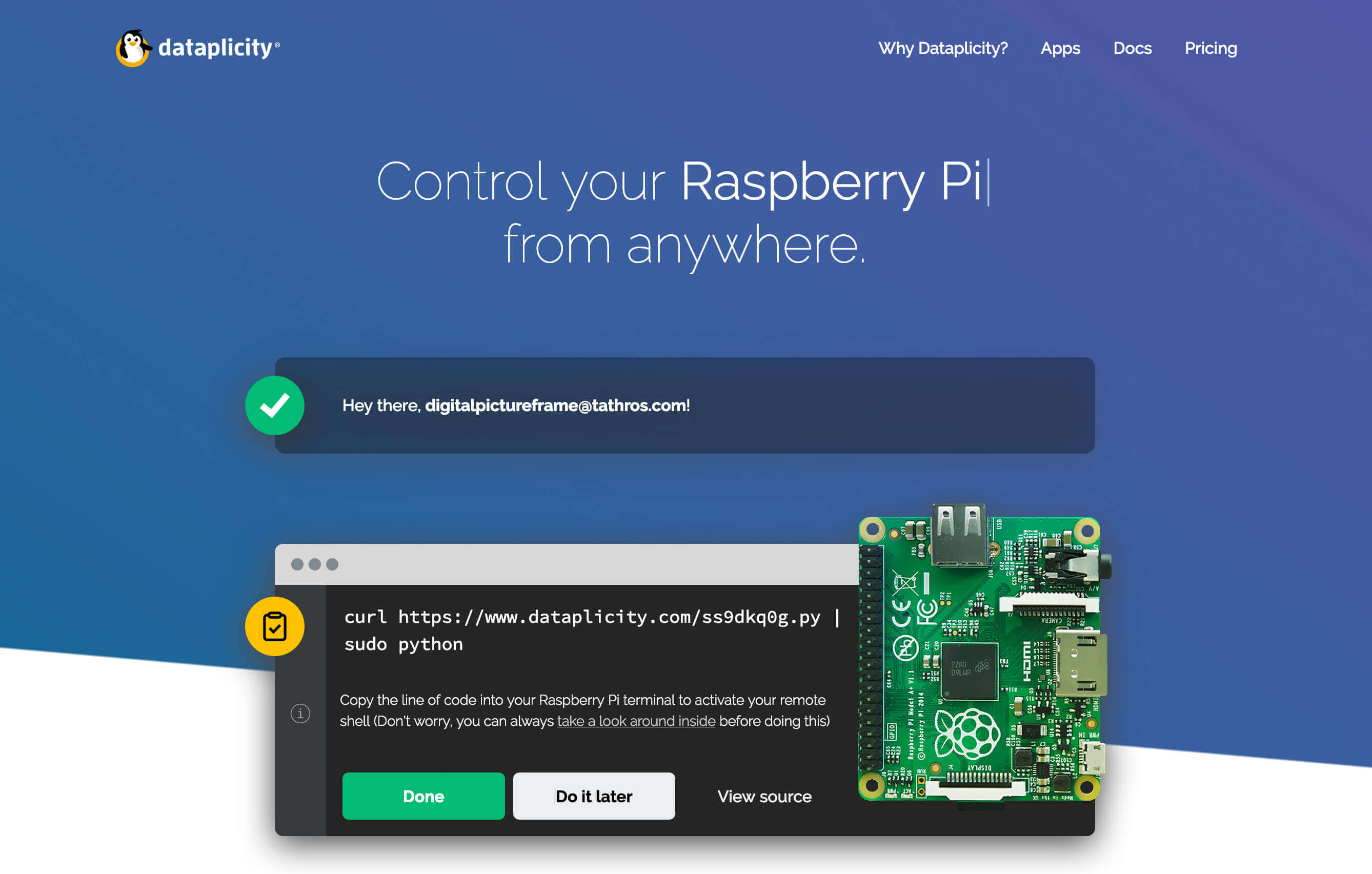I have built quite a few digital picture frames based on the Raspberry Pi for family & friends in recent years. These frames are deployed all over the world. Although they require very little to no maintenance, there is always a time when something doesn’t work, or there is a new feature that you want to roll out.

There are various ways how to access a remote Raspberry Pi, but one that stands out for me for ease of use and reliability is Dataplicity.
In this article, I will show you how it works and how to set it up.
Do you need remote access to your digital picture frame?
If you have built only one digital picture frame for home use, you may not need this solution.
But if you have built one for your parents, siblings, or you have a digital picture frame at your weekend home, then you should read on.
Things in our household exclusively seem to break whenever I am not home. In such an event I typically receive a determined call from my beloved wife, ordering me to do something.
And sometimes in the past, even if very rarely, this happened with our digital picture frame which has a prominent place in our living room. I had probably rolled out a new home automation feature without sufficient testing (as you may have guessed I like tinkering) and hadn’t thought all implications through to the end.
But anyway, the result was that our frame was dark, she was expecting guests, and I was on a business trip.
In situations like these, it would have been helpful to access the Raspberry Pi powering the digital picture frame remotely to make a few changes to hopefully get it up and running again in no time.
Also, if you have given a digital picture frame to non-IT-literate people, it’s helpful to be able to access it remotely without requiring any interaction on site.
It may be little things like changing a wifi SSID or password, adding a new feature, or just making a general system update to ensure that the operating system has all the latest security fixes.
You may not need it for two years, but when you need it, you will be happy to have it!
Introducing Dataplicity
Dataplicity is the brainchild of Elliot Mackenzie, the founder of MachineForest, a “manufacturer of network-connected things” as the company calls itself. They are based in Oxford, United Kingdom, the country that brought us the Raspberry Pi!
I always like to know who is behind software solutions to understand their motivation and the potential of any harmful use especially if you install it on a networked computer.
In the case of Dataplicity, I believe that the developers are trustworthy. They even publish the source code of a script that is being downloaded and provide lots of documentation.
Dataplicity is a small piece of software that you install on your Raspberry Pi powering your digital picture frame which allows you to access the terminal.
The Dataplicity installer script creates a ‘dataplicity’ user account which is marked as a system service account. This client runs as an unprivileged user which means when you connect using the Dataplicity shell, you still need to enter your sudo password to get superuser access to your device.
As long as your remote Raspberry Pi has a functioning internet connection, you can control it as if you were in the local network.
Installing Dataplicity

When you go to dataplicity.com, you will be asked to provide an email (as your account name). Hit “Start”, and you will get a line of code that you copy and paste in the Terminal of the Raspberry Pi that you want to control. So do it before your digital picture frame leaves the house!
Go to “Devices” and click on your Raspberry Pi.

If you now enter
su pifollowed by your password, you will log in with your regular user ID.

From there on, you can do whatever you would do if you and your remote computer were in the same network.
There is even a native app for iOS and Android, as well as macOS and Windows 10.
Dataplicity is free for one device and offers paid packages with more advanced functionality.
Alternatives to Dataplicity
There is a good overview of various methods to access your Raspberry Pi over the internet described on the Raspberry Pi homepage, but I found the ease of use of Dataplicity intriguing.
Remote.it works similarly and offers an unlimited number of devices subject to personal fair use policy. But it’s not as easy to set up (their password dialogue drove me crazy despite using a super-secure computer-generated password it had to contain five pre-defined characters!), and the device isn’t installed automatically, but with a bit of effort it works as well.
Remote-ioT offers five free non-commercial devices and packages for businesses.
Yaler.net is more for the high-end industrial use case and offers no free devices.
Losant is a large US-based company targetting the industrial IoT market. I couldn’t find any information on pricing on their website.
Conclusion
If you have a digital picture frame that you want to control remotely, I would recommend using Dataplicity. Nothing beats the ease of use of this software and it’s optimized for the Raspberry Pi.
It’s interesting to compare the websites of these companies. They all sell the same product more or less, and yet the difference in their appearance is striking.
On the one hand, there is Dataplicity where everything is super simple, and then there is everybody else. Decide for yourself!
Was this article helpful?
Thank you for your support and motivation.
Related Articles
- How to reduce the wear on your SD card in your Raspberry Pi digital photo frame
- Three ways to change your wifi password and SSID on a headless Raspberry Pi locally and remotely
- Which Raspberry Pi model should you get for your digital photo frame?
- How to find the IP address of a new device in your network with Angry IP Scanner
